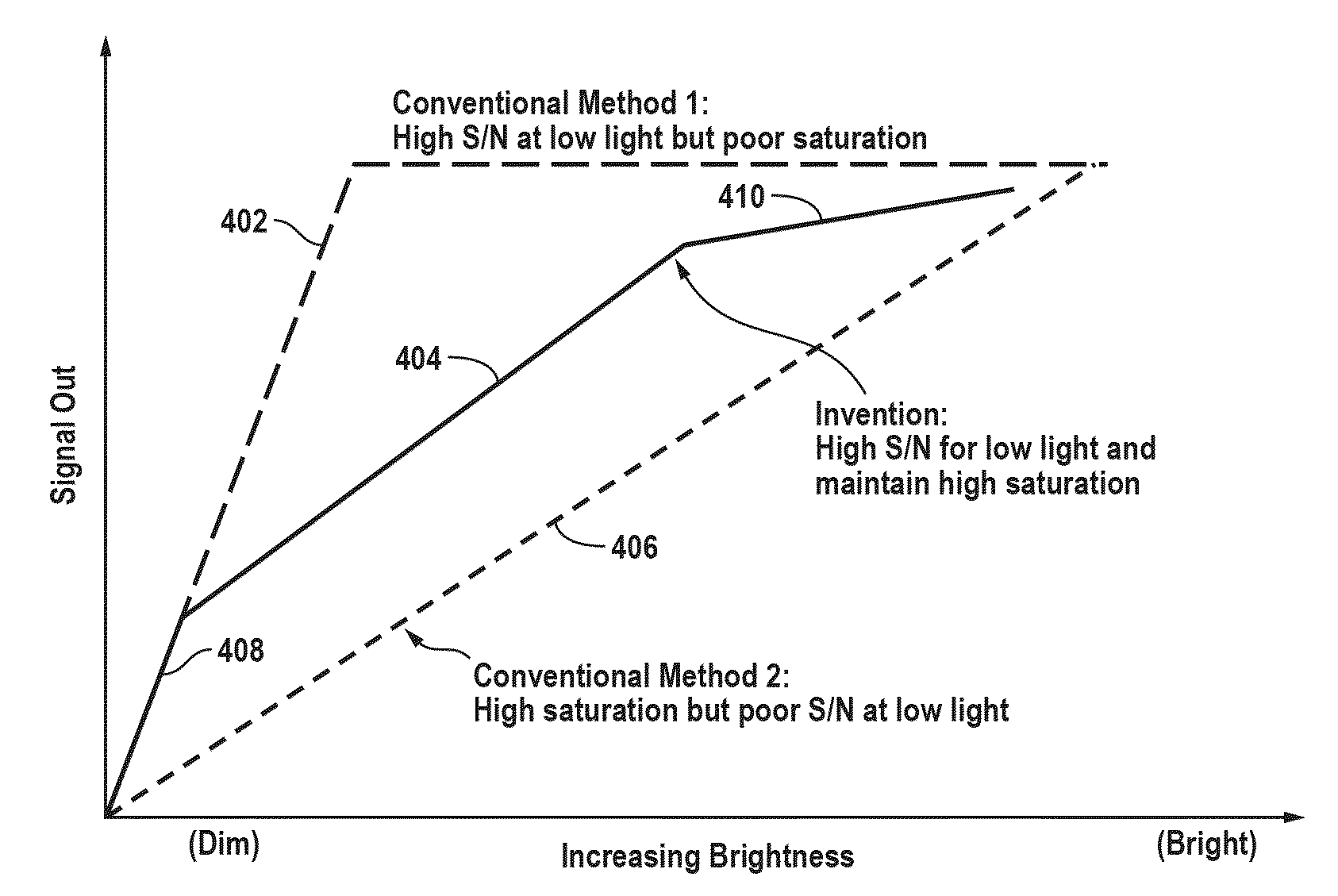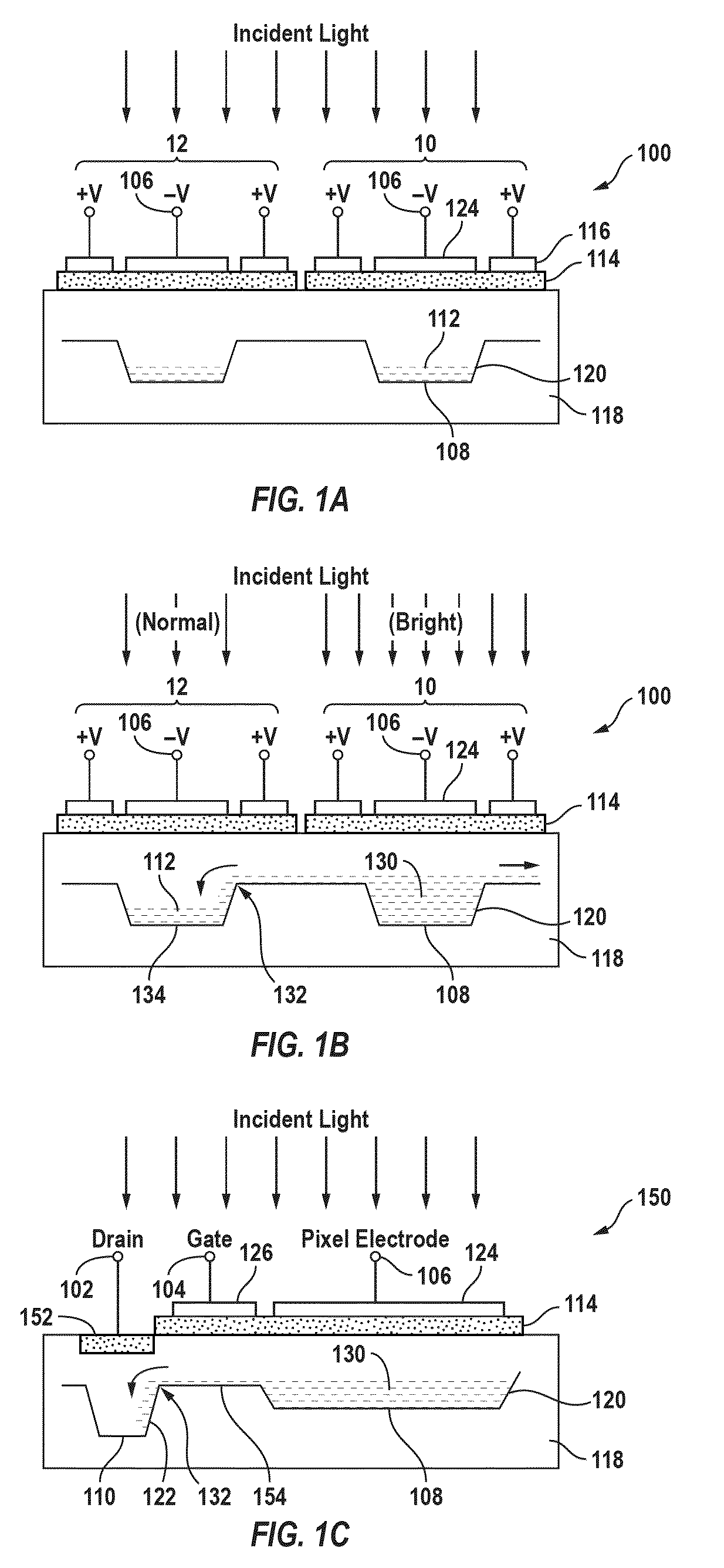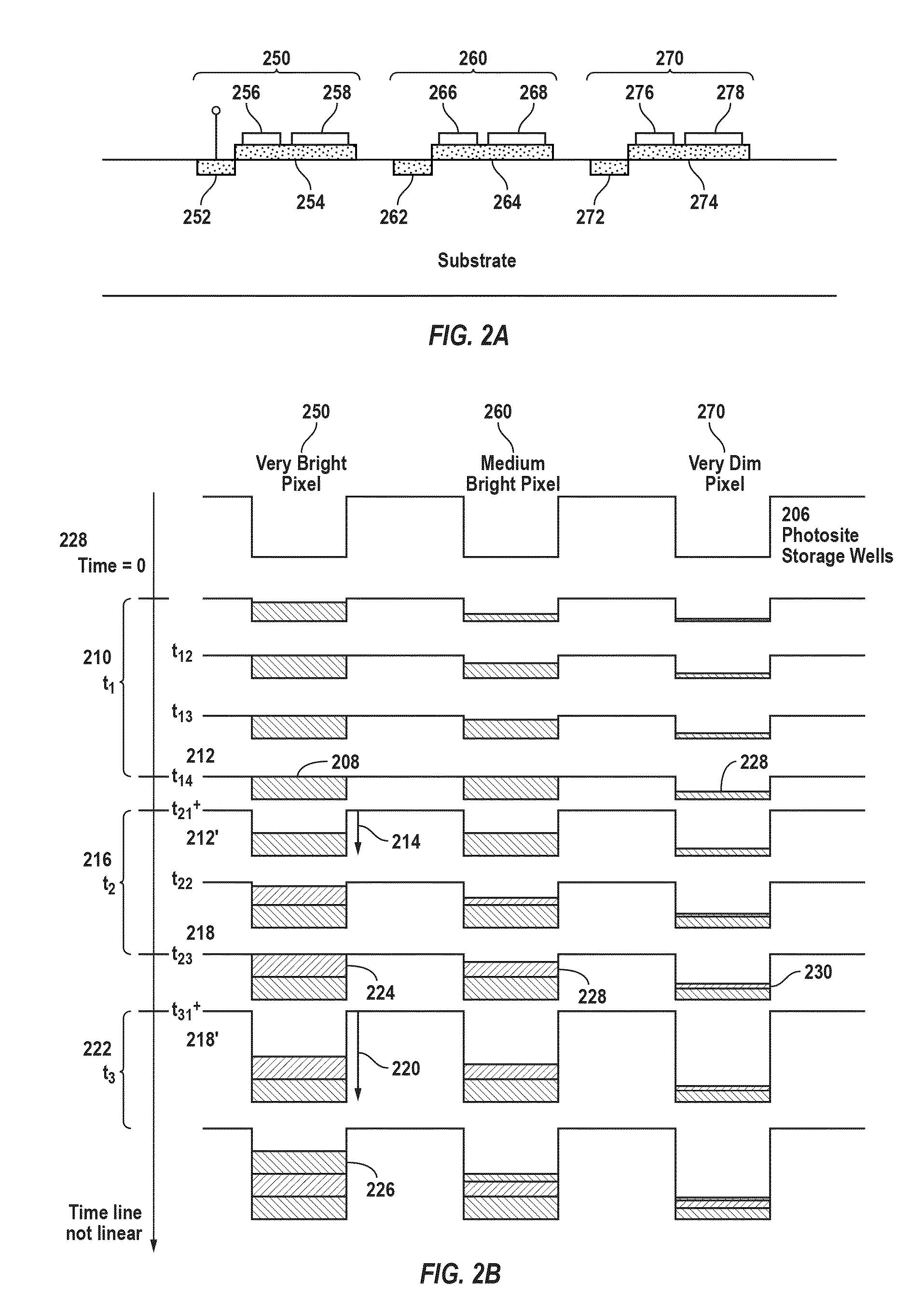Sensor-based gamma correction of a digital camera
a digital camera and sensor technology, applied in the field of imaging systems, can solve the problems of image content loss, dim lighting, and saturating bright areas of images, and achieve the effect of widening the effective dynamic range, reducing the gain, and reducing the loss of details
- Summary
- Abstract
- Description
- Claims
- Application Information
AI Technical Summary
Benefits of technology
Problems solved by technology
Method used
Image
Examples
Embodiment Construction
[0019]In accordance with one embodiment of the present invention, a customizable and user-definable voltage-time curve is applied to the antibloom structure of an image sensor, and the resulting pixel response to varying levels of brightness is equivalent to gamma-corrected behavior. More specifically, the invention takes advantage of the ability of an image sensor having an anti-blooming drain and specialized timing circuitry to skim off excess charge at a pixel once the level has exceeded a definable threshold. In particular, by varying the voltage on the antibloom drain during light integration, pixel charges generated in response to a low level light are fully captured, whereas pixel charges generated in response to a bright light spill over in a controlled manner. Therefore, a wider effective dynamic range is attained.
[0020]The following description is provided with reference to an imaging system with a charge coupled device (CCD) based image sensor. It is understood, however, ...
PUM
| Property | Measurement | Unit |
|---|---|---|
| time-varying voltage | aaaaa | aaaaa |
| voltage | aaaaa | aaaaa |
| time | aaaaa | aaaaa |
Abstract
Description
Claims
Application Information
 Login to View More
Login to View More - R&D
- Intellectual Property
- Life Sciences
- Materials
- Tech Scout
- Unparalleled Data Quality
- Higher Quality Content
- 60% Fewer Hallucinations
Browse by: Latest US Patents, China's latest patents, Technical Efficacy Thesaurus, Application Domain, Technology Topic, Popular Technical Reports.
© 2025 PatSnap. All rights reserved.Legal|Privacy policy|Modern Slavery Act Transparency Statement|Sitemap|About US| Contact US: help@patsnap.com



